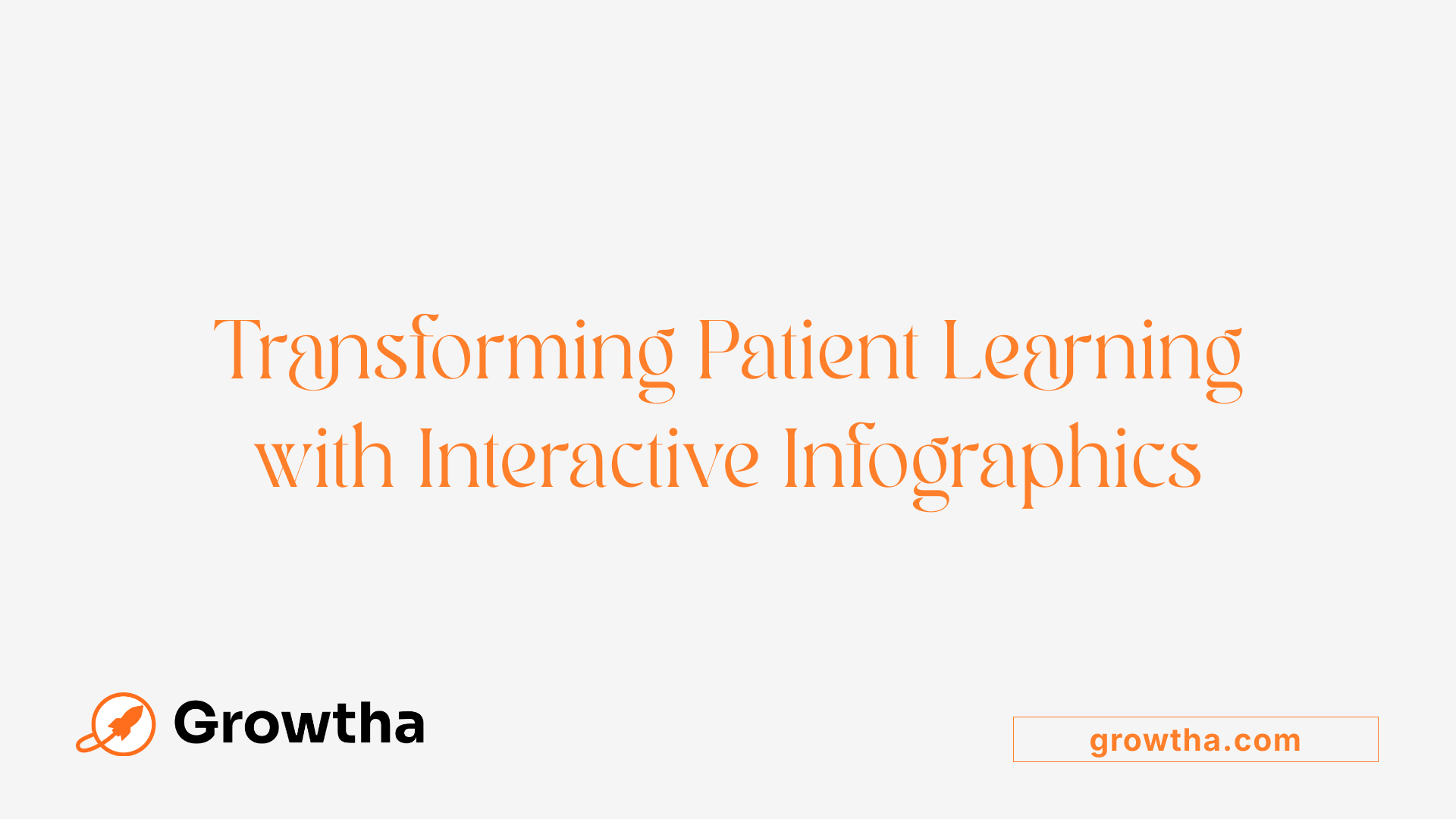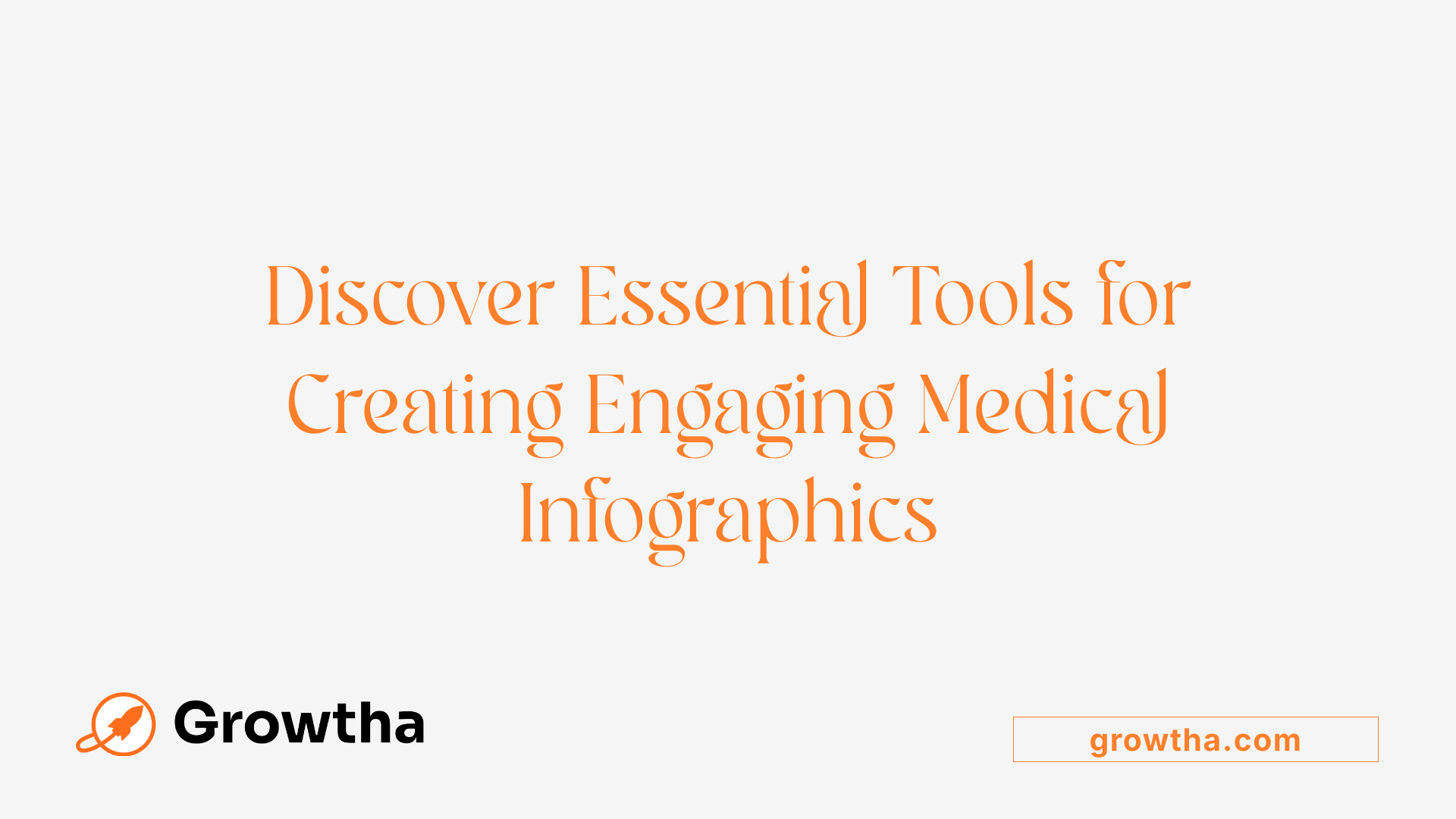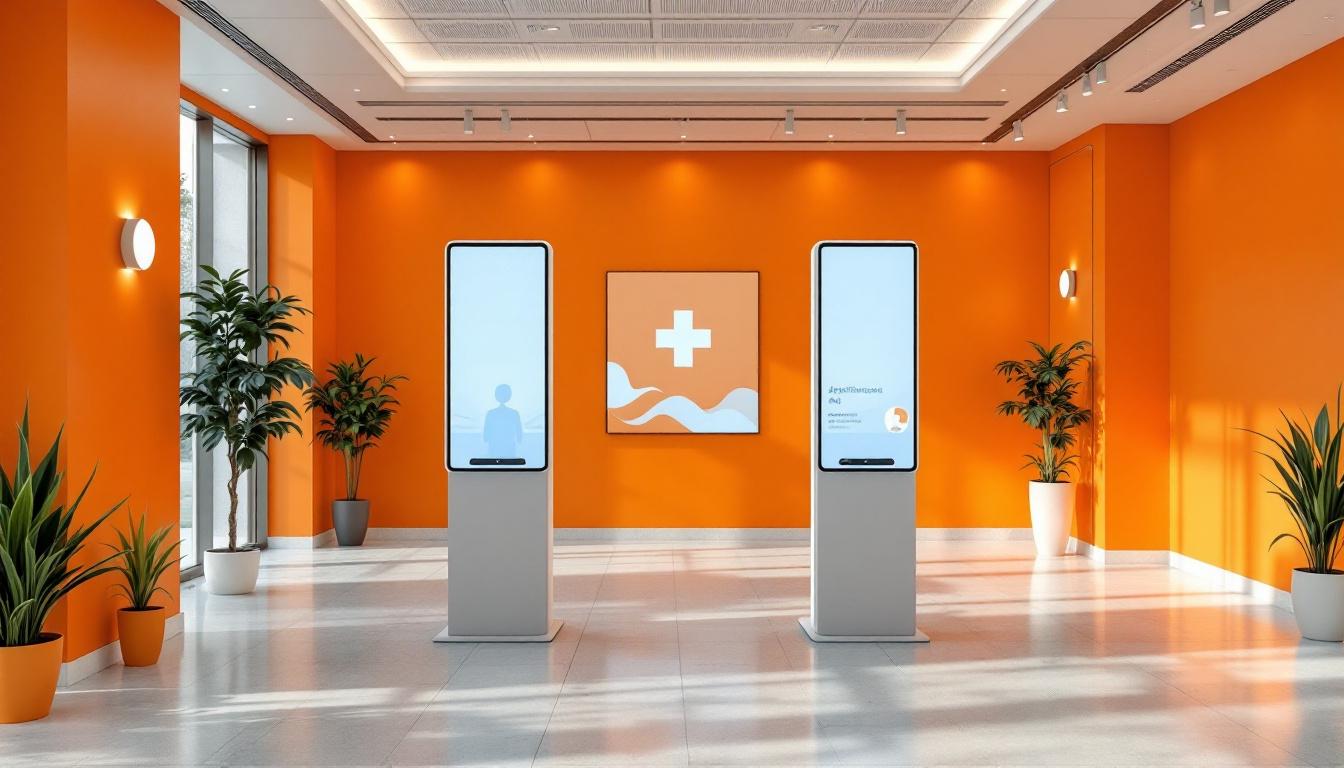How to Use Interactive Infographics for Patient Education
Transforming Patient Engagement with Interactive Visual Tools


How to Use Interactive Infographics for Patient Education
Harnessing the Power of Interactive Infographics in Healthcare
In today’s digital age, effective patient education extends beyond traditional pamphlets and static diagrams. Interactive infographics have emerged as dynamic tools that enhance understanding, engagement, and health literacy. This article explores how healthcare professionals can strategically employ interactive infographics to revolutionize patient communication, streamline information delivery, and foster better health outcomes.
Understanding Interactive Infographics and Their Role in Healthcare

What are interactive infographics?
Interactive infographics are visual storytelling tools that incorporate elements of user engagement to make medical and health information more accessible and memorable. Unlike traditional static images, these infographics include clickable features, animations, scrolling effects, and multimedia components such as videos or maps. When users interact with the content—by clicking, hovering, or scrolling—they can explore data, see explanations, or access additional information.
These features help users understand complex medical concepts, statistics, and procedures more effectively. For healthcare providers and organizations, creating such content can be achieved through user-friendly digital platforms like Canva, Venngage, or Shorthand—tools that do not require advanced coding skills. The combination of visual storytelling, narrative elements, and interactivity transforms static data into engaging learning experiences.
In healthcare, interactive infographics are valuable for educating patients about conditions, treatments, and health risks. They also support medical training by illustrating mechanisms, clinical data, and real-world insights. Overall, they serve as dynamic tools that make complex health information easier to grasp and retain.
Enhancing Patient Education Through Interactivity

How can interactive infographics be used to improve patient education?
Interactive infographics serve as powerful tools in patient education by transforming dense medical data into engaging, easy-to-understand visuals. These digital graphics combine images, text, and clickable elements that allow patients to explore information actively. For example, a patient can click on different parts of an anatomical diagram to learn about specific organs or medical procedures, which promotes deeper understanding.
Personalization is another advantage. Educational infographics can be tailored to individual patient needs, considering their language, literacy level, and health condition. This customization ensures that the information provided is relevant and easy to grasp.
Visually appealing elements like animations and icons enhance comprehension by illustrating complex concepts clearly. Interactive features such as quizzes, clickable question prompts, and immediate feedback encourage participation, making learning more memorable.
Furthermore, these tools support diverse learning preferences, helping patients who learn best through visual and kinesthetic methods. They also streamline communication, reducing misunderstandings and empowering patients to participate actively in their care.
Overall, integrating interactive infographics in healthcare settings fosters better dialogue, supports patient engagement, and leads to more informed health decisions, ultimately improving health outcomes.
Best Practices and Design Principles for Creating Impactful Interactive Educational Infographics
What are the best practices and design principles for creating effective interactive educational infographics?
Creating powerful interactive educational infographics involves a blend of clarity, engagement, and accessibility. First, understanding the target audience is crucial; knowing their age, background, and familiarity with the topic helps tailor content that resonates and is easily understood.
Simplicity and clarity in design are essential. Use minimal text, clear labels, and straightforward visuals to avoid overwhelming viewers. Visual hierarchy guides the audience through the information, emphasizing the most important points with size, color, or position.
Consistency in branding—such as color schemes and fonts—creates a cohesive look, making the infographic more professional and trustworthy. Accessibility should also be prioritized by choosing high-contrast colors, readable fonts, and ensuring content meets standards for users with disabilities.
Flexibility and scalability allow infographics to be customized for different audiences or updated with new data. Utilizing templates and visual tools can streamline creation, ensuring each infographic remains engaging and informative.
By combining accurate, relevant data with visually appealing and interactive elements, health educators can create infographics that make complex information more understandable, memorable, and shareable.
Furthermore, incorporating interactive features like clickable hotspots, quizzes, and animations boosts engagement. Users can explore deeper layers of information at their own pace, promoting active learning and retention.
Tools and Resources for Designing Interactive Infographics
 Creating compelling and interactive infographics for patient education requires the use of versatile tools and platforms that combine visual appeal with interactivity.
Creating compelling and interactive infographics for patient education requires the use of versatile tools and platforms that combine visual appeal with interactivity.
Software platforms and templates are fundamental for designing engaging medical visuals. Popular options include Canva, Visme, Piktochart, and Adobe Creative Cloud. These tools offer a wide range of templates, icons, charts, and multimedia integration features, allowing healthcare professionals and educators to craft clear, informative, and visually appealing infographics without extensive design experience.
Geospatial and interactive map tools enable the visualization of health data and social determinants across geographic regions. Platforms such as Mapbox, ArcGIS StoryMaps, Google Maps, StoryMapJS, Mapme, and Scribble Maps facilitate creating customized maps that users can zoom, click, and explore. These tools are particularly useful for illustrating community health disparities, environmental impacts, or epidemiological data.
Multimedia and story-based creation platforms like Shorthand and Felt support the development of immersive, scroll-driven narratives that incorporate videos, images, text, and interactive elements. These enhance patient engagement by providing a story-like experience, making complex health information more relatable.
Many of these tools offer free plans or affordable subscription options, making them accessible for healthcare providers and organizations aiming to improve patient understanding through visual storytelling. By combining these visual and interactive elements, designers can develop customized and engaging infographics that effectively communicate complex medical concepts, motivate healthy behaviors, and improve overall patient education.
For those searching for the best tools suited specifically for medical and health infographic creation, platforms like Canva and Piktochart are frequently recommended due to their user-friendly interfaces and healthcare-specific templates. Additionally, maps and spatial data tools like ArcGIS or Mapbox are invaluable for geographic health communications. Integrating multimedia storytelling platforms enhances the depth and appeal of educational content, ensuring patients remain engaged and informed.
Technological Innovations and Future Trends in Medical Communication

What are the trends and emerging practices in interactive infographics for healthcare education?
The landscape of healthcare education is rapidly evolving with the integration of advanced technologies. One prominent trend is the incorporation of artificial intelligence (AI) to create highly personalized educational content. AI systems analyze individual patient data to generate tailored information, making learning more relevant and engaging.
Augmented reality (AR) and virtual reality (VR) are transforming how patients and professionals explore medical topics. These immersive technologies provide realistic simulations of anatomy, procedures, or environmental impacts, offering an engaging and effective way to understand complex concepts.
Telehealth platforms are increasingly adopting interactive infographics within virtual consultations. These tools support clearer communication, allow shared exploration of health information, and facilitate informed decision-making.
Furthermore, AI-powered chatbots and automated dialogue systems enhance user engagement by providing instant responses, guiding patients through educational content, and assessing understanding.
These advancements collectively aim to make healthcare infographics more interactive and tailored, improving health literacy, encouraging active participation, and ultimately leading to better health outcomes. As these technologies continue to develop, future healthcare communication will become more accessible, personal, and engaging, supporting diverse learning needs and bridging gaps in health education.
| Technology | Application | Impact |
|---|---|---|
| Artificial Intelligence | Personalization of content | Increased relevance and engagement |
| AR & VR | Immersive explorations | Better comprehension and reduced anxiety |
| Telehealth | Integration with interactive tools | Enhanced virtual consultations |
| Chatbots & Automation | Real-time interaction | Continuous support and feedback |
These innovations signal a future where medical communication is more dynamic, interactive, and tailored, paving the way for improved patient understanding and health management.
Implementing Interactive Infographics in Healthcare Settings
How do you create effective interactive infographics for healthcare?
Creating impactful health infographics involves several essential steps. First, clearly define your objectives, such as simplifying complex medical data or improving patient understanding. Gather reliable data from trusted sources like peer-reviewed studies and official health guidelines. Next, design an intuitive layout that guides the user naturally through the content, using a logical visual hierarchy. Incorporate visual elements like icons, charts, and illustrations that resonate with the target audience. Using tools such as Canva, Venngage, or PowerPoint can facilitate this process, and automated AI tools like Text-to-Viz or DataShot can help generate layouts based on input data. Include interactive triggers—such as clickable hotspots, hover-over details, or embedded questions—that promote engagement and active exploration. Rigorous testing with real users helps identify and correct usability issues, ensuring the infographic is both accessible and informative. Once finalized, publish the infographic across suitable channels, including healthcare websites, patient portals, or social media platforms. Measuring engagement through analytics or user feedback provides insights to refine and improve future infographics.
How to integrate into patient care workflow?
Embedding interactive infographics into the patient care process enhances communication and learning. Incorporate them during clinical consultations, in patient education materials, or as part of online health campaigns. For example, a visual summary of a medication’s effects can clarify complex treatment plans. Linking infographics to electronic health records or patient portals allows patients to revisit information at their convenience. Additionally, providing staff training ensures healthcare providers understand how to utilize and explain these tools effectively, fostering better patient-provider interactions.
Monitoring and feedback for continuous improvement
Regular evaluation of infographic effectiveness is critical. Collect patient feedback through surveys or during follow-up visits to gauge comprehension and satisfaction. Use analytics to track how often and how long users engage with the content. Monitoring these metrics helps identify which elements are most effective and where improvements are needed. Incorporate iterative revisions based on this data, ensuring content remains accurate, relevant, and engaging. Ultimately, continuous feedback loops enable healthcare providers to optimize educational materials, making them more impactful and aligned with patient needs.
Evaluating Effectiveness and Ensuring Trust in Interactive Infographics

What are the measures to ensure trustworthiness and effectiveness of infographics?
To ensure that health-related infographics are both trustworthy and effective, several important steps should be followed. First, including references and citations from reputable sources such as peer-reviewed journals, official health guidelines, and validated databases enhances credibility. These references allow users to verify the accuracy of the information, which is essential for medical and health content.
Second, involving healthcare professionals in the vetting process is critical. Future platforms might incorporate peer review or accreditation processes, where experts evaluate the infographic's accuracy and relevance before publication. This step helps maintain high standards of quality and professionalism.
User feedback and iterative testing also play a vital role. Creating prototypes and collecting responses from target audiences can highlight areas for improvement. Revisions based on this feedback ensure the content is clear, engaging, and tailored to the audience's needs.
Compliance with privacy regulations, such as HIPAA in the United States, must be prioritized. Healthcare providers should avoid collecting or sharing sensitive patient information through interactive tools unless they have appropriate safeguards in place.
Implementing a comprehensive validation process, including credibility checks, user testing, and privacy compliance, significantly boosts the trustworthiness and impact of health infographics. These measures help in communicating complex medical information accurately while fostering confidence among users.
Empowering Patient Understanding Through Strategic Use of Visual Content
The effective use of interactive infographics in patient education hinges on thoughtful design, utilization of advanced tools, and staying abreast of technological innovations. By engaging patients actively, simplifying complex data, and continuously refining content through feedback, healthcare providers can significantly improve health literacy and patient outcomes. As emerging technologies like AI and VR become more integrated, the future of interactive patient education promises enhanced personalization, engagement, and accessibility, ultimately leading to more informed and empowered patients.
References
- Interactive Patient Education: 5 Methods That Work
- Designing Infographics: Visual Representations for Enhancing ...
- Medical Infographic Design Best Practices | INFUSE MEDIA GROUP
- Designing Effective Health-Related Infographics for Patient Education
- Classroom Teacher Toolkit: Interactive Infographics and Infographic ...
- Interactive infographics: the key to information retention
- Interactive infographics in scientific communication: transforming ...







